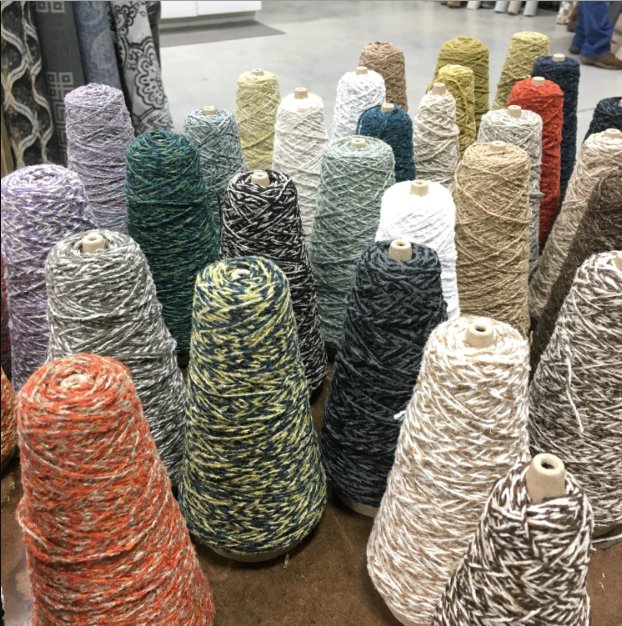
History of Yarn Dyeing

The making of synthetic dye
The first synthetic dye named "mauveine" was accidentally discovered by chemist William Henry Perkin in 1856. With his discovery, chemists began to feverishly develop new and improved synthetic dyes such as fuchsine, safranine, and induline. Since then, thousands of synthetic dyes have been produced.
Solution dyed vs piece dyed
Fast forward to the 1950s when European chemists discovered and perfected a new form of dyeing called "solution dyeing." When synthetic fibers (such as acrylic, nylon, and polyester) are made, the liquid chemical solution that makes up the fiber is forced through tiny holes in an item called a spinneret, extruding long fibers – think of water being forced through a showerhead. During this process, dyes are impregnated into the extruded fibers, thus creating an almost endless variety of colors. Solution dyeing is not applicable to natural fibers (such as wool) because the fibers are already in existence.
With piece dyeing fabrics and package dyeing yarns, the advantage is that one can dye as little or as much as needed. Solution dyeing requires larger quantities of yarn to be produced (ie larger runs). For the fabric weaving industry, this creates limitations. Where one could create an infinite amount of custom colors in the package dyeing process, solution dyeing requires weaving mills to purchase much larger quantities of a single color.
Solution dyed yarns today
All Revolution Performance Fabrics are made of solution dyed polypropylene. These fabrics are inherently stain resistant, have a relatively long life span, and can even be cleaned with bleach, whereas package-dyed yarns cannot be bleach cleaned. Since Revolution Performance Fabrics are solution dyed, the process of adding stain resistant treatments to the fabrics is eliminated. This is great news for the consumer because some of these treatments contain PFCs (Perfluorinated Chemicals). Studies have suggested that PFCs could be linked to a variety of health concerns. For more information concerning PFCs, visit the Nation Collaborating Centre for Environmental Health's data sheet by clicking here: https://www.ncceh.ca/sites/default/files/Health_effects_PFCs_Oct_2010.pdf
STI is proud to offer a product which not only makes life easier due to its clean-ability, but it can actually make life better and safer for you and your family.
Leave a comment